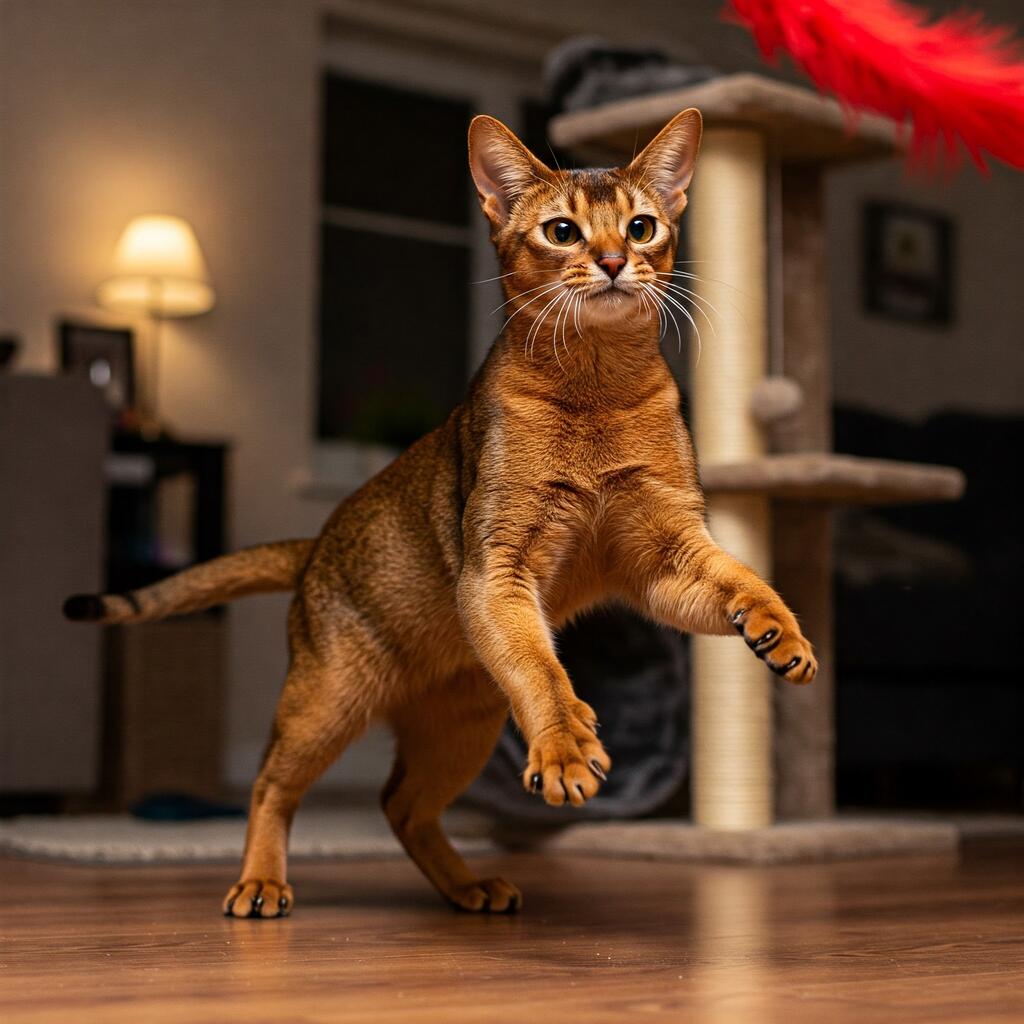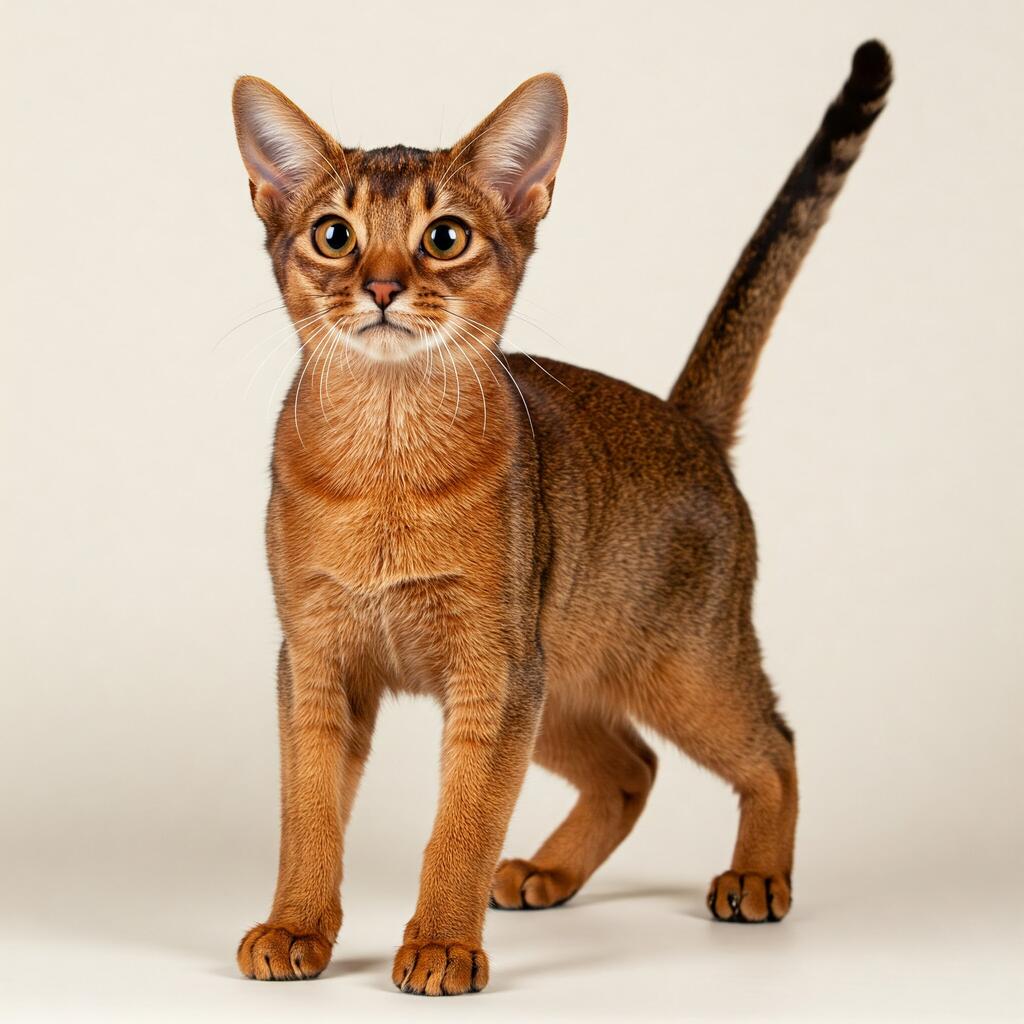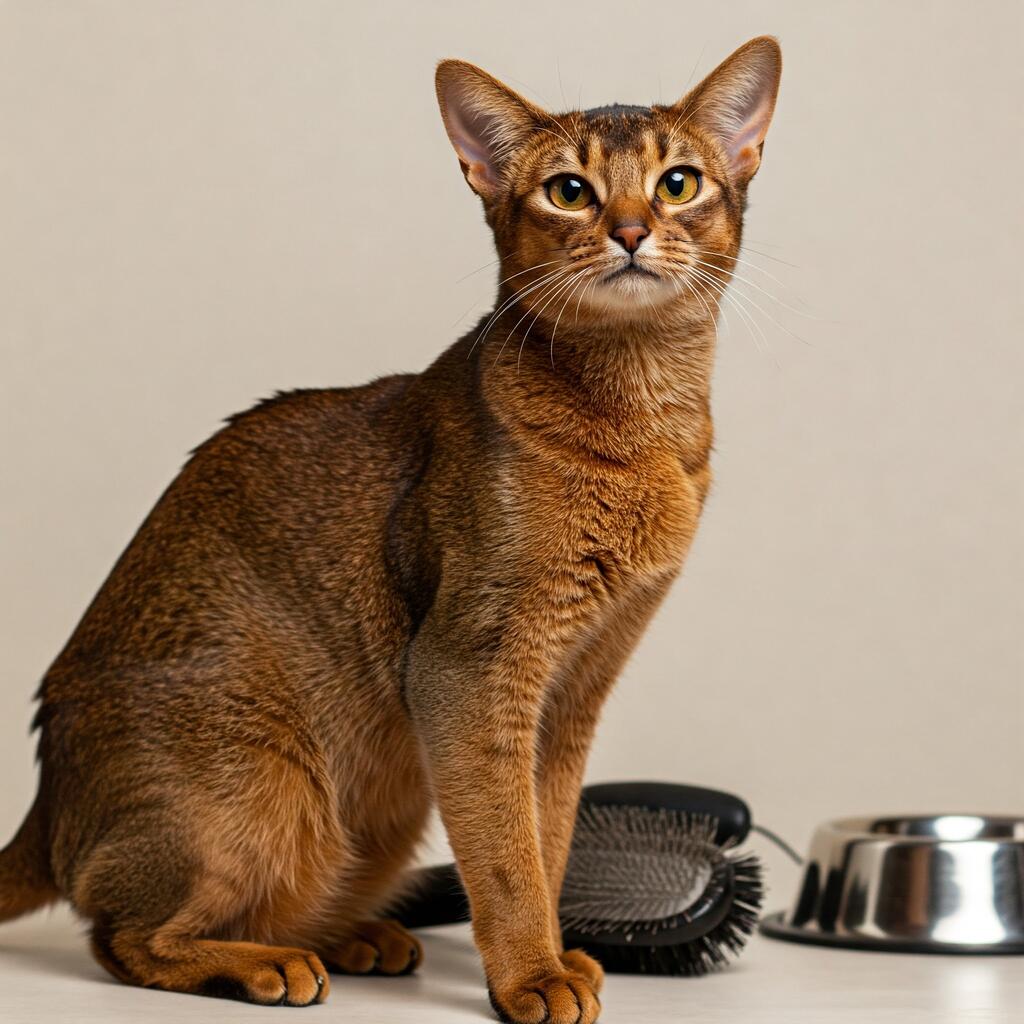
Abyssinian Cat: Playful, Elegant, and Energetic
The Abyssinian cat is a very mysterious feline. Starting with its origins, which are very controversial. What is true is that this is one of the oldest feline breeds in the world. During some archaeological excavations in Egypt, the remains of mummified cats were found, which, when compared with some wall paintings in Egyptian tombs and present-day Abyssinian cats, revealed an incredible resemblance.
And the Abyssinian cat was even found to resemble the goddess Bastet in face and body. Other experts think instead that he may have appeared on Asian soil and then landed on the European continent following sailors.
Its name links it to Abyssinia, which is today's Ethiopia, and derives from the fact that the first specimen of this species, called Zula, a cat introduced to the United Kingdom by Captain Leonard Barrett on his return from the British expedition to Abyssinia, after various crosses with cats with similar coat became an official breed in 1882 and is one of the most widespread breeds in the United States and Canada, while in Italy it is still rather rare.
This breed soon became very popular, both in Europe and in the United States. This popularity was also its salvation, as the two world wars almost decimated this breed. New Abyssinian cats were imported and the breed perpetuated. At the end of the 1960s, an epidemic of the feline leukaemia virus spread in Great Britain, again endangering this breed, which was only saved by the import of new specimens.
Character of the Abyssinian Cat

His agility in his movements makes him an extremely graceful cat, who is unlikely to do any harm in the home. He does, however, like to climb and run, so he is not a cat that can only live in a flat, unless he is modified for exercise. He must have the possibility of venting his energy in movement and play. A safe garden with trees and a place to run would be ideal for this cat, although it does not disdain the warmth and comfort of a home.
It is a cat that tends to be intrigued by the presence of strangers in the home without exaggerating or exposing itself too much. It does not like to be alone, so if it is at home alone for several hours during the day, it would be a good idea to provide it with at least one other animal, possibly a cat to keep it company. However, if well introduced from an early age he may also seek the company of a dog.
It is, however, also a rascal, so it is best never to leave dishes with food in our absence, as it is always hungry and tends to steal and even reproaches can do nothing against this temperament.
Appearance of the Abyssinian Cat

The head has a soft outline, with ears wide at the base and well spaced apart. The eyes are almond-shaped and may be green, hazel or amber, and are very lively and expressive. The body is slender, slender and graceful with slender but muscular limbs ending in small, oval feet. The tail is long, broad at the base and pointed at the end.
But it is the coat that distinguishes this breed; the coat is generally short and with little undercoat. The coat is deep in colour, each individual hair having a base colour, interrupted by two or three bands of darker pigment and always ending in a darker tip. The coat appears darker along the spine.
The colour becomes more muted and lighter under the neck, on the ventral part and on the inner leg. Its coat, however, is very soft to the touch and pleasant, shiny, very thick and adherent to the body. Its coat colours range from reddish-brown, coppery-red and chocolate brown. There is also a lighter variety but it is quite rare, i.e. with a silver-white base coat and coloured tip.
Health and care of the Abyssinian Cat

It does not shed hair, or very little, although it cannot be considered a hypoallergenic cat. It is quite long-lived, even reaching 20 years of age. It has a generally strong and resilient health and does not present any particular problems throughout its life. It can, however, like other cats, suffer from certain genetic diseases, which a serious breeder can avoid by targeted mating.
As far as food is concerned, it must be considered that the Abyssinian cat is very greedy and always very hungry, so it is best to use packaged food, both dry and wet, in the right quantities for its weight and age. In old age it has a tendency to put on weight.






















